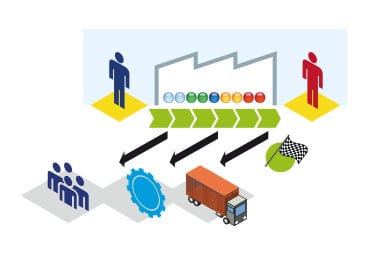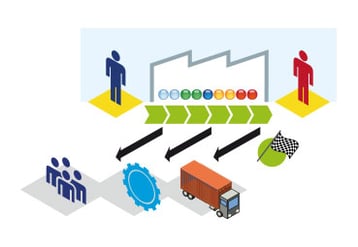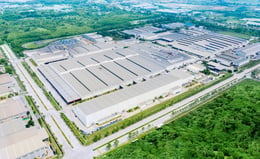5 Predictions for Manufacturing in 2021
Brian Hoey - August 08, 2020

 Even a year ago, change in the manufacturing sector was driven by a diverse array of different trends and motivating factors. Now, however, companies all share a common priority: outlast the pandemic and maintain continuity of operations. On balance, you would expect this to drive technology innovation in more concrete, practical directions. Sure, someone among the incredibly diverse array of global electronics producers is probably using voice activated AI in their plants—just as someone else is probably bucking every emerging trend by continuing to eschew digitization and connectivity. But, as with so many aspects of the new normal, what we've seen so far, and expect to continue to see, is that new global challenges will reveal and accelerate existing trends and avenues for change. For that reason, these predictions will seem like they could have been made at any point in the last few years. But make no mistake: each of these preexisting trends is now being shaped by our understanding of the "new normal" for modern supply chains.
Even a year ago, change in the manufacturing sector was driven by a diverse array of different trends and motivating factors. Now, however, companies all share a common priority: outlast the pandemic and maintain continuity of operations. On balance, you would expect this to drive technology innovation in more concrete, practical directions. Sure, someone among the incredibly diverse array of global electronics producers is probably using voice activated AI in their plants—just as someone else is probably bucking every emerging trend by continuing to eschew digitization and connectivity. But, as with so many aspects of the new normal, what we've seen so far, and expect to continue to see, is that new global challenges will reveal and accelerate existing trends and avenues for change. For that reason, these predictions will seem like they could have been made at any point in the last few years. But make no mistake: each of these preexisting trends is now being shaped by our understanding of the "new normal" for modern supply chains.
1. Increased Distributed Manufacturing
The trend of local, small-scale distributed manufacturing as an alternative to larger plants has already been underway for years, but we expect it to continue gaining steam as the global logistics market gets more complex and manufacturers get more connected. Over time, it will become more and more common for final products to be assembled and packaged as close to their eventual destinations as possible in order to minimize freight costs and reduce lead times. This has the potential to add value in the form of increased responsiveness, but it also necessarily adds complexity to processes that are often already quite complex. In order for businesses to really take advantage of this trend, they’re going to need a high degree of visibility into their existing production processes, to say nothing of open and connected planning flows that can coordinate effectively between different plants.
2. Greater Customer Engagement
As the Internet of Things (IoT) slowly encompasses the entire litany of everyday products, consumers will come to think of products not as discrete purchases, but as elements of a connected, overarching whole that includes most of their technology, appliances, accessories, etc. This will necessarily have an impact not just on the way that manufacturing outfits design and produce products, but on the ways in which companies interact with and meet the needs of their buyers. Sure, increased product customization is going to lead to many manufacturers gathering more information from and working in collaboration with their customers, but this trend is likely to go beyond that. The more end-users think of your goods within the context of platforms and services, the more they will expect your company to leverage any data or feedback they provide into new sources of value.
3. Industry 4.0 Adoption
This bullet point has probably appeared in any number of predictions in recent years, and it will no doubt continue to appear long after 2020 has come and gone. Still, we’d be remiss if we didn’t point out that the technology empowering the modern smart factory is becoming more sophisticated, and it is gaining wider adoption. For companies that are seeking to gain a competitive advantage, there’s still time left to do so—most of your competitors even the in the coming few years are unlikely to be fully operational with regards to things like autonomous machine decision-making and cyber-physical processes. As such, early adopters can still provide value for their customers in ways that haven’t previously been possible. By predicting customer order in advance, for instance, you can radically reduce lead times and improve product turnaround dramatically; by the same token, you increase your throughput through the use of IoT sensors that give early warnings when a machine breakdown is becoming likely, such that unexpected downtime can be preempted (presenting cost savings that you could potentially pass on to customers). Even if full Industry 4.0-capabilities don’t seem immediately feasible for a lot of organizations, we expect that some of the technologies that make it possible will begin to trickle in to even the most luddite-filled operations.
4. Agility and Responsiveness as Top Priorities
And why, you ask, will these technologies become more popular? Because changing market conditions and customer demands will force manufacturers to increasingly focus their attention on improving agility and becoming more responsive. Right now, reducing the time it takes to receive, create, process, and schedule a customer order is becoming increasingly important to the average manufacturing outfit. Why? Because it’s a way to reduce lead times and more closely match production cycles to real, emerging demand levels. The more effectively a company can match those two elements, the more agility they can work into their operations—meaning less in the way of costly buffer stock and reduced inbound and outbound logistics lead times. Like we said, Industry 4.0 technologies can help with these goals. How? By offering high visibility and the ability to create efficient plans in a smart, digitized manner. Rather than relying on static production flows every week, smart, digitally-enabled manufacturing outfits can reinvent their plans on the fly each week in order to make the most of the resources, raw materials, and demand levels that present themselves.
5. AI, Machine Learning, and Advanced Analytics Coming to the Fore
If there’s a general theme to the broad trends that we’ve been sketching out above, it’s this: market conditions and customer expectations will continue to put new demands and increased pressure on manufacturers, and smart companies will respond by relying on digitization and new technology. If we’re on the money here, it stands to reason that in the next year or so technology like AI and machine learning will become increasingly important elements of the modern supply chain. This might take the form of AI-powered workflows that enable supply chains to make corrections to small-scale disruptions without any human intervention, or it might mean data-driven forecasts and predictions that boast improved accuracy when it comes to estimating likely future demand levels, fuel prices, raw material availability, etc. These technologies are part of a virtuous circle, thriving on increased visibility and connectivity while fostering further increases in visibility and connectivity in turn. Thus, an organization that implemented advanced planning software to connect previously siloized departments might find that it suddenly had sufficiently robust data streams that it could implement advanced prescriptive analytics; those analytics could help reduce waste and improve data collection, leading to both improved margins and improved analytics. In this way, advanced analytics stands poised to drive exponential change in the global supply chain within the coming years.
LATEST POSTS
- Understand Circular Economy in The Manufacturing Industry
- How Can Industry 4.0 IT Integration Be Achieved Smoothly?
- The Significance of Order Sequencing in Discrete Manufacturing
- How to improve your Supply Chain Management: The Power of Control Towers
- Optimizing Human Resource Scheduling in Manufacturing: A Technological Approach



